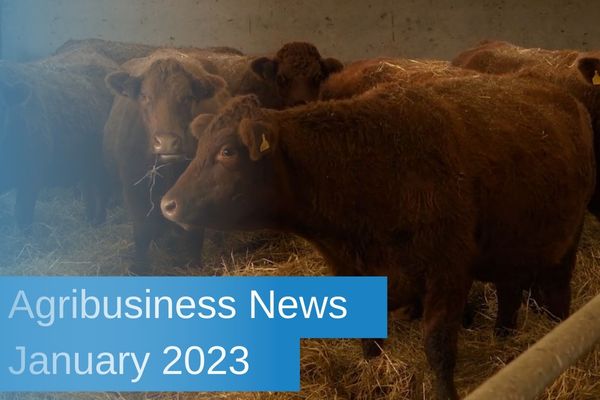Agribusiness News January 2023 – Beef
22 December 20222022 – High inputs vs high outputs?
2022 started well with a strong beef price around 420p/kg in January before dipping back in the spring with the usual increase in finished cattle availability. From March onwards the price continued to rise through the summer and peaking in November at 461.8p/kg for R4L steers.
The tightness in cattle availability throughout the year drove a lot of the price increases with demand being rather subdued.
One of the challenges currently facing the beef price is the consumers’ rising cost of living which is impacting their shopping habits. With increases in beef prices on retailer shelves of around 10.5%, consumers have opted to trade down into these cheaper cuts. This has presented many processors with a carcase balance challenge with high stocks of steaks and roasting joints often being offered at reduced prices to move volume.
Beef producers, although welcoming the strong beef price this year, have been challenged with increases in input costs – mainly feed costs and the availability and cost of fertiliser. This has led, in particular, to many questioning the profitability of suckler cow enterprises
Strong cull cow trade
With the increase in demand for mince and a global shortage of manufacturing beef, the cull cow trade rocketed this year, peaking at around 410p/kg DW with cull cow live ring trade exceeding £2,000/hd for some of the heavier, beefier type of cow. The trade for these cows dipped back slightly as numbers available increased in the lead up to housing and scanning.
The strong cow trade and concerns over the profitability of the sector saw the numbers of cows slaughtered in Scotland rise considerably on the year. January – October 2022 saw 12% more cows slaughtered than the same period in 2021, with October 2022 alone seeing a 40% increase in the cow slaughter compared with 2021.
Combine this with an increase in the heifer kill in 2022, there will be a larger than anticipated contraction of the suckler herd in Scotland into 2023 and beyond. Store cattle continued to be a good trade in 2022 with prices at a similar level to 2021, with the exception of some of the lighter, longer keep cattle that appeared cheaper due to the increased costs associated to finish them.
2023 Beef Outlook
As consumers are faced with ongoing rises in the cost of living into 2023 and inflation continuing to be at a high level, it is unlikely that we will see a large rise in the demand for prime beef.
The demand for mince and cheaper cuts will remain strong and with it, the demand for cull cows is expected to be high in the new year. Cattle availability looks to remain tight as we go into 2023, however demand will dictate how much that will impact the beef price.
The recently released EU Agricultural Outlook 2022-2032 is estimating a drop in EU beef production of around 9% in the next decade with their suckler herd contracting by 6% in that time. However, they do expect global beef demand to continue to grow due to population growth and higher incomes in developing countries.
2022 has certainly brought challenges to the sector, but with that comes opportunities. These may be in the form of changes systems to be less reliant on inputs or changes in cattle numbers that work within your system.
If you are considering evaluating a change to your business there is funding up to £1,000 available through FAS Specialist Advice to look at your business in greater detail.
lesley.wylie@sac.co.uk, 01307 464033
Sign up to the FAS newsletter
Receive updates on news, events and publications from Scotland’s Farm Advisory Service


